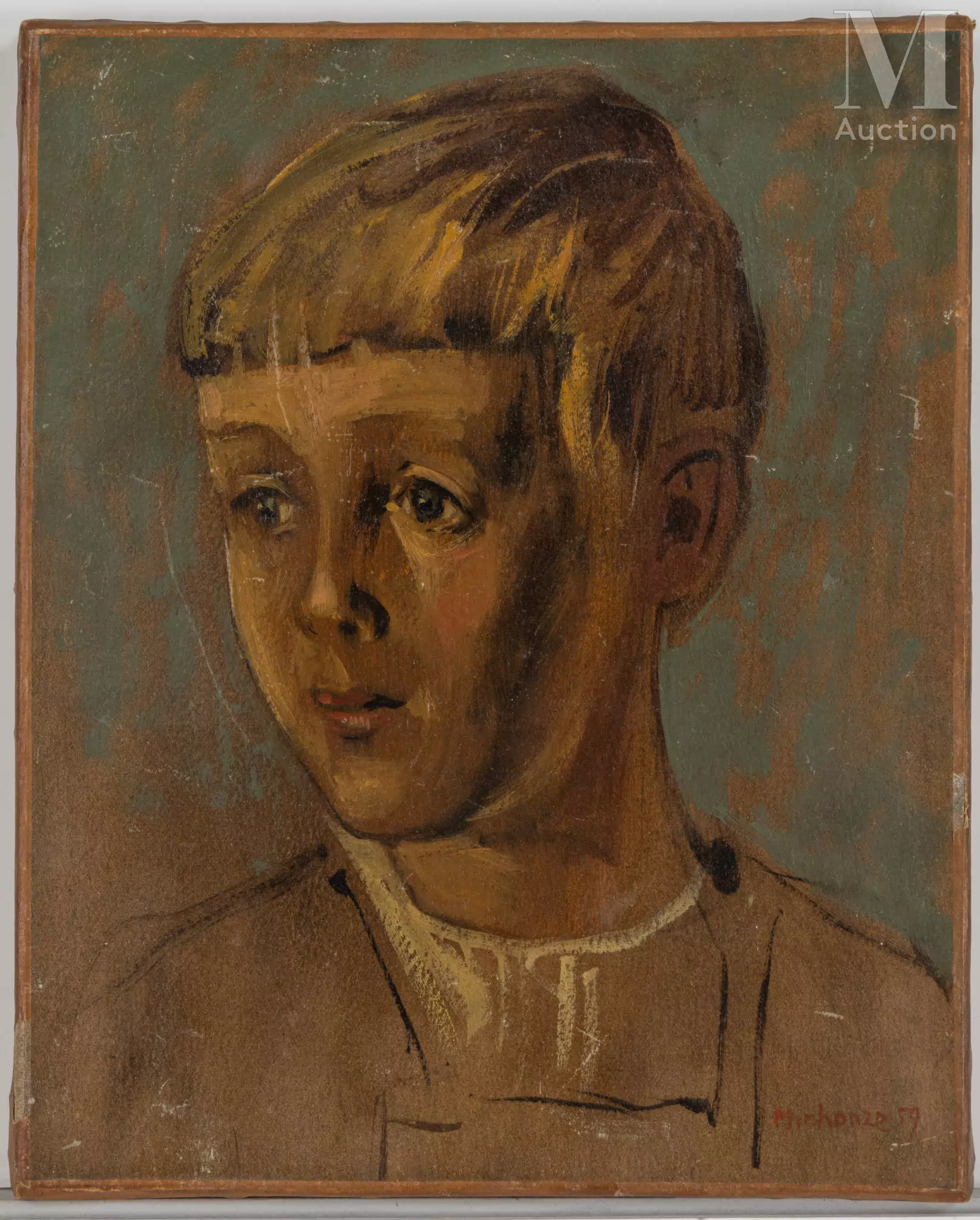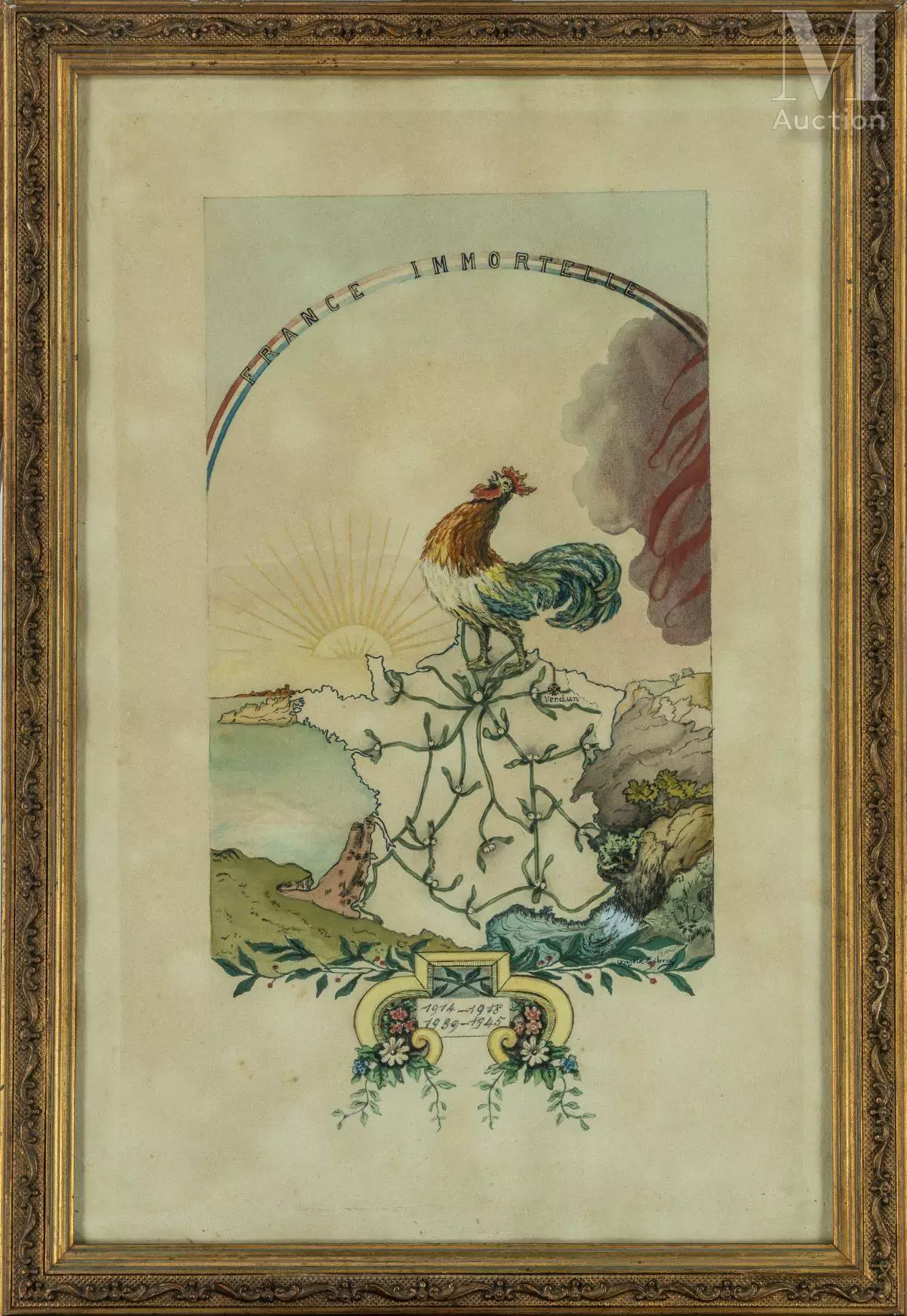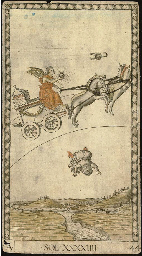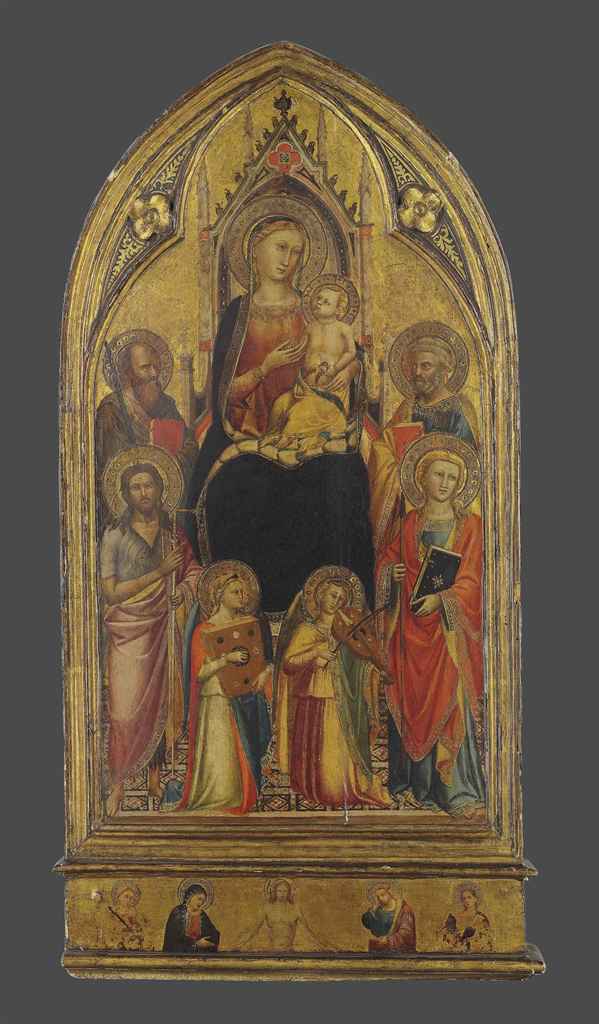The Master of the Troyes Missal (active mid-15th century) Book of Hours, use of Rome, in Latin and French, illuminated manuscript on vellum [Troyes, c.1460s] A Book of Hours illuminated by the Master of the Troyes Missal, ‘the most outstanding personality in Troyes illumination of the mid-15th century’, generously illustrated with eighteen large miniatures and in a handsome fanfare binding. 182 x 130mm. i + 152 + i, complete, collation: gatherings of eight (save for 112, 810, 154, and 186), 15 lines, ruled space: 101 x 67mm, preserving most catchwords, traces of prickings, one- to two-line illuminated initials on red and blue grounds with white tracery throughout, every text page with one-sided illuminated panel borders of ivy-leaf and hairline stem decoration, one four-line illuminated initial ‘O’ with three-quarter border (f.142), 18 large arch-topped miniatures with gold bars on three-sides within full borders of acanthus leaves, flowers, fruit, birds and insects infilled with ivy-leaf stems, each set above a large illuminated initial. Late-16th-century tan morocco gilt à la fanfare, with a bordure ‘à la roulette’, illustrated in E. Deville, La Reliure Francaise, 1930, plate 19, as an example of 'reliure des Eve'. Listed in G.D. Hobson, Les reliures à la fanfare, 1935, no 27, as one of the 23 bindings that can be attributed to the binder of the Statuts de l’Ordre du St. Esprit (1579), probably Nicolas Eve (Hobson, op. cit., p.55), edges gilt. Modern blue-cloth box. Content: Calendar, in French ff.1-12; Gospel Extracts ff.13-18; Matins of the Cross ff.19-23; Matins of the Holy Spirit, incorrectly rubricated ff.23v-26; Hours of the Virgin, use of Paris, matins incorrectly rubricated ff.27-78; Penitential Psalms and Litany ff.79-98; Short Office of the Dead ff.99-129; Fifteen Joys of the Virgin, in French ff.129v-134; Seven Requests to Our Lord, Doulx dieu doulx pere, in French ff.135-137; Obsecro te, in the masculine ff.138-142; O intemerata ff.142-145; Suffrages ff.146-152. Illumination: The Master of the Troyes Missal – named for a manuscript in the Bibliothèque nationale de France (lat. 865A) written by the scribe Jean Coquet around 1460 – is described by Francois Avril as ‘the most outstanding personality in Troyes illumination of the mid-15th century’ (ex. cat. Très riches heures de Champagne, 2007, p.126). Troyes was the principal centre of book production in the Champagne during the second half of the 15th century, a period in which the luxurious manuscripts emanating from the region made it a viable alternative to Paris for wealthy patrons, and the Master of the Troyes Missal was the most highly sought-after artist resident in that city. Widespread demand from amongst the pious laity for Books of Hours, the most popular devotional text of the Middle Ages, won the Master of the Troyes Missal many commissions; he produced manuscripts for patrons in the surrounding Champagne region and elsewhere in eastern France (for the Master and his work, see F. Avril and N. Reynaud, Les manuscrits à peintures en France 1440-1520, 1993, pp.180-184). That the Master was so much in demand resulted in a number of his Books of Hours being of somewhat summary execution: the same is not true of our manuscript, which is particularly fully illustrated with eighteen large miniatures, which survive here in fine and fresh condition, and a border on every leaf. The elegantly attenuated, straight-backed figures with planar faces are set in interiors hung with rich brocade tapestries or against landscapes of rocky outcrops against a darkening blue sky. The quadripartite miniature depicting the four Evangelists (f.13) is an innovative variation from the Master’s usual iconographic programme, in which the first Gospel extract is more commonly introduced by a miniature depicting St John on Patmos. The subjects of the miniatures are as follows: Four Evangelists f.13; Crucifixion f.19; Pentecost f.23v; Annunciation f.27; Visitation f.38v; Nativity f.51
The Master of the Troyes Missal (active mid-15th century) Book of Hours, use of Rome, in Latin and French, illuminated manuscript on vellum [Troyes, c.1460s] A Book of Hours illuminated by the Master of the Troyes Missal, ‘the most outstanding personality in Troyes illumination of the mid-15th century’, generously illustrated with eighteen large miniatures and in a handsome fanfare binding. 182 x 130mm. i + 152 + i, complete, collation: gatherings of eight (save for 112, 810, 154, and 186), 15 lines, ruled space: 101 x 67mm, preserving most catchwords, traces of prickings, one- to two-line illuminated initials on red and blue grounds with white tracery throughout, every text page with one-sided illuminated panel borders of ivy-leaf and hairline stem decoration, one four-line illuminated initial ‘O’ with three-quarter border (f.142), 18 large arch-topped miniatures with gold bars on three-sides within full borders of acanthus leaves, flowers, fruit, birds and insects infilled with ivy-leaf stems, each set above a large illuminated initial. Late-16th-century tan morocco gilt à la fanfare, with a bordure ‘à la roulette’, illustrated in E. Deville, La Reliure Francaise, 1930, plate 19, as an example of 'reliure des Eve'. Listed in G.D. Hobson, Les reliures à la fanfare, 1935, no 27, as one of the 23 bindings that can be attributed to the binder of the Statuts de l’Ordre du St. Esprit (1579), probably Nicolas Eve (Hobson, op. cit., p.55), edges gilt. Modern blue-cloth box. Content: Calendar, in French ff.1-12; Gospel Extracts ff.13-18; Matins of the Cross ff.19-23; Matins of the Holy Spirit, incorrectly rubricated ff.23v-26; Hours of the Virgin, use of Paris, matins incorrectly rubricated ff.27-78; Penitential Psalms and Litany ff.79-98; Short Office of the Dead ff.99-129; Fifteen Joys of the Virgin, in French ff.129v-134; Seven Requests to Our Lord, Doulx dieu doulx pere, in French ff.135-137; Obsecro te, in the masculine ff.138-142; O intemerata ff.142-145; Suffrages ff.146-152. Illumination: The Master of the Troyes Missal – named for a manuscript in the Bibliothèque nationale de France (lat. 865A) written by the scribe Jean Coquet around 1460 – is described by Francois Avril as ‘the most outstanding personality in Troyes illumination of the mid-15th century’ (ex. cat. Très riches heures de Champagne, 2007, p.126). Troyes was the principal centre of book production in the Champagne during the second half of the 15th century, a period in which the luxurious manuscripts emanating from the region made it a viable alternative to Paris for wealthy patrons, and the Master of the Troyes Missal was the most highly sought-after artist resident in that city. Widespread demand from amongst the pious laity for Books of Hours, the most popular devotional text of the Middle Ages, won the Master of the Troyes Missal many commissions; he produced manuscripts for patrons in the surrounding Champagne region and elsewhere in eastern France (for the Master and his work, see F. Avril and N. Reynaud, Les manuscrits à peintures en France 1440-1520, 1993, pp.180-184). That the Master was so much in demand resulted in a number of his Books of Hours being of somewhat summary execution: the same is not true of our manuscript, which is particularly fully illustrated with eighteen large miniatures, which survive here in fine and fresh condition, and a border on every leaf. The elegantly attenuated, straight-backed figures with planar faces are set in interiors hung with rich brocade tapestries or against landscapes of rocky outcrops against a darkening blue sky. The quadripartite miniature depicting the four Evangelists (f.13) is an innovative variation from the Master’s usual iconographic programme, in which the first Gospel extract is more commonly introduced by a miniature depicting St John on Patmos. The subjects of the miniatures are as follows: Four Evangelists f.13; Crucifixion f.19; Pentecost f.23v; Annunciation f.27; Visitation f.38v; Nativity f.51






.jpg)
.jpg)
.jpg)



.jpg)
.jpg)
.jpg)
Try LotSearch and its premium features for 7 days - without any costs!
Be notified automatically about new items in upcoming auctions.
Create an alert